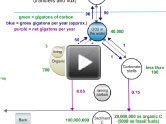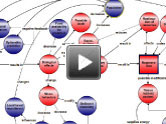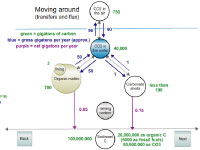|
|
|
||||||||||||||||||
About these Webinars: The ROLE Model webinars provide scientists with the opportunity to interact with educators and present their research in a non-traditional format - through multimedia concept maps created with the Concept Map Builder and presented through the Ocean Climate Interactive. [more]
About this Scientist:
Dr. Larry Mayer is a professor of biogeochemistry at the University of Maine where he has been teaching for over two decades. In his lab, he and his graduate students study how organisms and materials (studied chemically) interact in earth surface environments. They use concepts and tools of chemistry, geology and biology, giving special focus to comparison and coupling of oceanic to terrestrial processes. [more]
About this Educator:
Beth Campbell is a former high school science teacher and current graduate student in marine biology at the University of Maine. Her research pertains to the injury and regeneration of marine polychaetes. Beth was a Sponsored Educator at the 2008 National Marine Educators Association Conference, and she has participated in three COSEE-OS workshops. [more]















